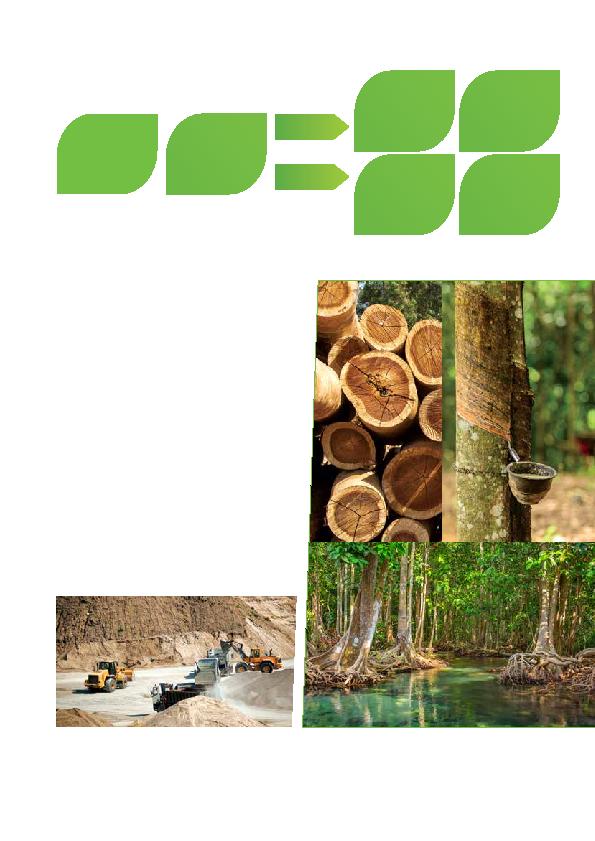
Figure 1:
Natural capital assessment
(adapted from the World Business Council for Sustainable Development (WBCSD))
RISKS AND
OPPORTUNITIES
Operational, Regulatory,
Reputational Product
and
market finance
VALUATION
Value economic,
environmental and
social issues
Disseminate results
BENEFITS OF NCA
Sustain and enhance
revenue
Reduce costs
Revalue assets
INTERNAL OUTCOME
Enhanced business
performance and
profitability
Assess liability and
compensation
Measure corporate value
Report performance
Improve social benefits
EXTERNAL OUTCOME
Compliance with
requirements and
informed actions
EMPLOYEES
STAKEHOLDERS
3
Building stone is perhaps the clearest example of the natural capital provided to man from nature
4
Cutting timber realizes but a small percentage of forest value.
5
Rubber is a renewable forest product that allows trees to continue to sequestrate carbon and emit oxygen.
6
Mangrove dissipates storm energy and provides spawning grounds for fish.
4
6
3
5
With environmental externalities provided for free to the top 3,000
global businesses valued by the UN at $2.1 trillion, financial advisor
KPMG in its recent report "Expect the Unexpected" estimates that
companies stand to lose 41 cents in the dollar, every dollar, if
they pay for these externalities. Coupled with the prediction that
sustainability-related global business opportunities in natural
resources may reach $2-6 trillion annually by 2050, the valuation
of ecological goods and services will be a game-changer. Business
leaders will understand their responsibilities and ignore them at
their peril.
There are several initiatives for the promotion of NCA. Corporate
Ecosystem Valuation, a framework for improving corporate
decision-making, is the brain child of the World Business Council
for Sustainable Development (WBCSD), while the World Bank Group
has established Wealth Accounting and Valuation of Ecosystem
Services (WAVES ) to link NCA, government and corporate policy
with decision-making to look beyond GDP for a more inclusive
assessment of growth and the well-being of society.
19
The value of natural capital
|
i10
